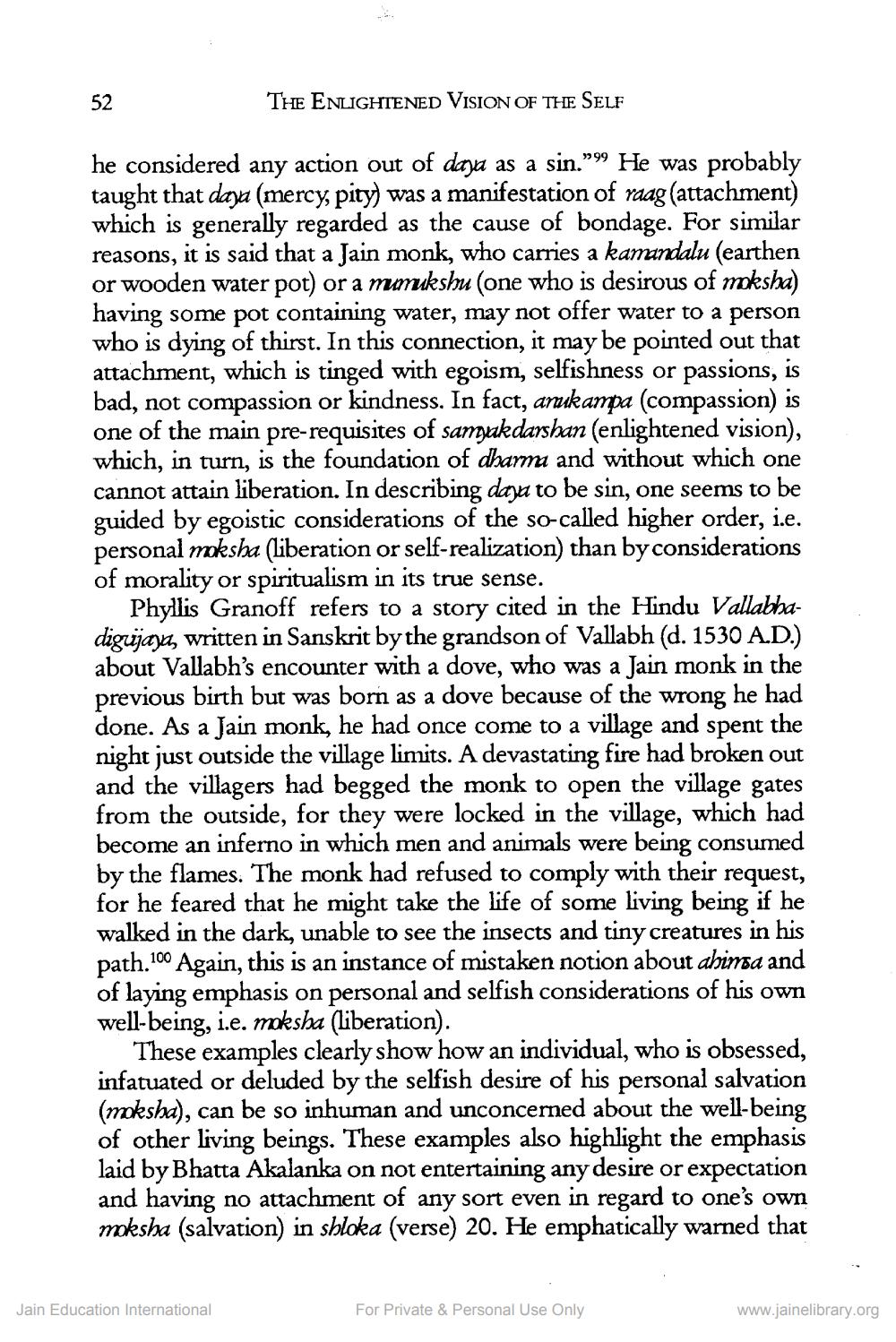________________
52
THE ENLIGHTENED VISION OF THE SELF
reasons,
he considered any action out of daya as a sin."" He was probably taught that daya (mercy, pity) was a manifestation of raag (attachment) which is generally regarded as the cause of bondage. For similar it is said that a Jain monk, who carries a kamandalu (earthen or wooden water pot) or a mumukshu (one who is desirous of moksha) having some pot containing water, may not offer water to a person who is dying of thirst. In this connection, it may be pointed out that attachment, which is tinged with egoism, selfishness or passions, is bad, not compassion or kindness. In fact, anukampa (compassion) is one of the main pre-requisites of samyak darshan (enlightened vision), which, in turn, is the foundation of dharma and without which one cannot attain liberation. In describing daya to be sin, one seems to be guided by egoistic considerations of the so-called higher order, i.e. personal moksha (liberation or self-realization) than by considerations of morality or spiritualism in its true sense.
Phyllis Granoff refers to a story cited in the Hindu Vallabhadigujaya, written in Sanskrit by the grandson of Vallabh (d. 1530 A.D.) about Vallabh's encounter with a dove, who was a Jain monk in the previous birth but was born as a dove because of the wrong he had done. As a Jain monk, he had once come to a village and spent the night just outside the village limits. A devastating fire had broken out and the villagers had begged the monk to open the village gates from the outside, for they were locked in the village, which had become an inferno in which men and animals were being consumed by the flames. The monk had refused to comply with their request, for he feared that he might take the life of some living being if he walked in the dark, unable to see the insects and tiny creatures in his path.100 Again, this is an instance of mistaken notion about ahimsa and of laying emphasis on personal and selfish considerations of his own well-being, i.e. moksha (liberation).
These examples clearly show how an individual, who is obsessed, infatuated or deluded by the selfish desire of his personal salvation (moksha), can be so inhuman and unconcerned about the well-being of other living beings. These examples also highlight the emphasis laid by Bhatta Akalanka on not entertaining any desire or expectation and having no attachment of any sort even in regard to one's own moksha (salvation) in shloka (verse) 20. He emphatically warned that
Jain Education International
For Private & Personal Use Only
www.jainelibrary.org




